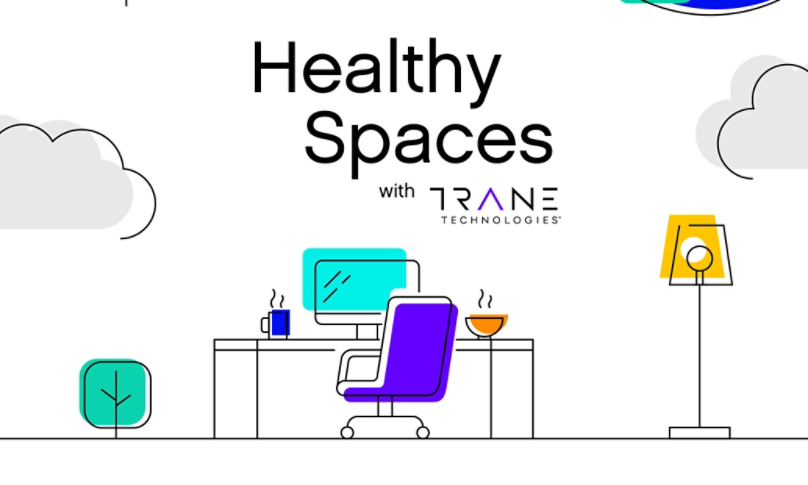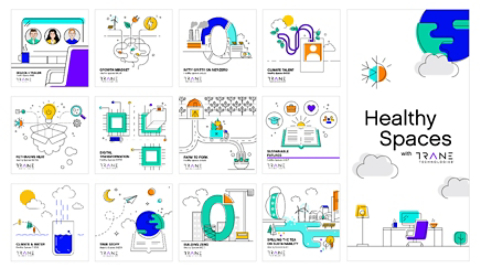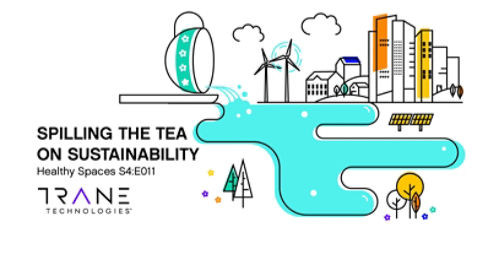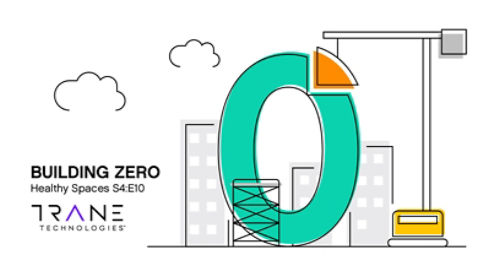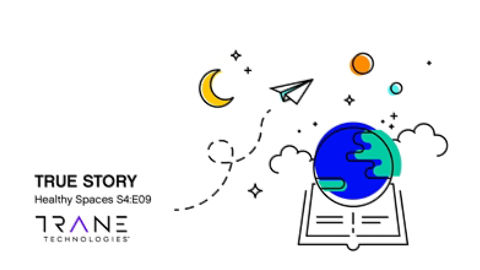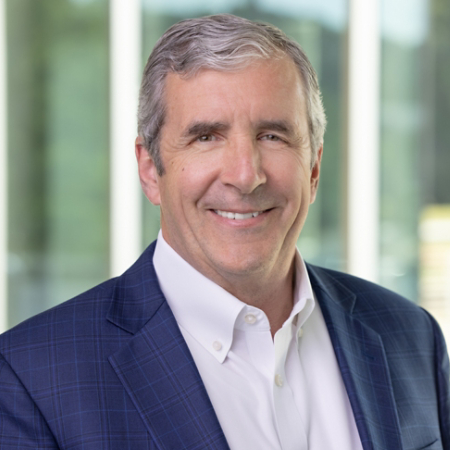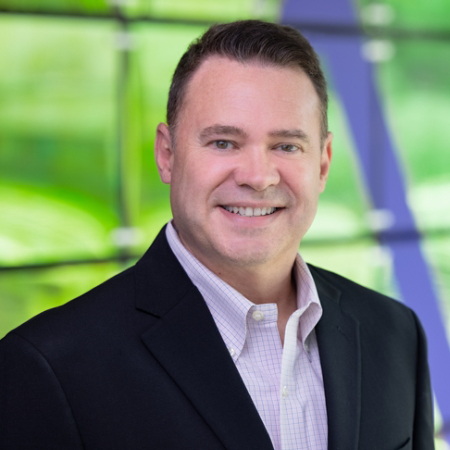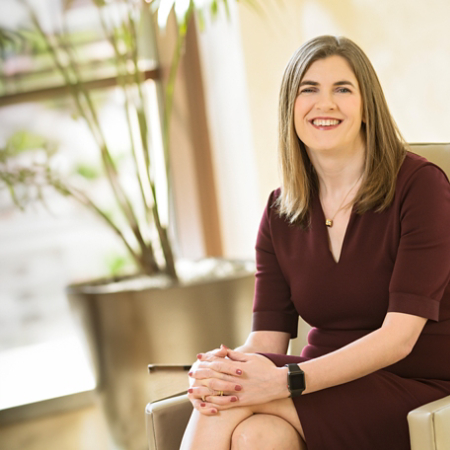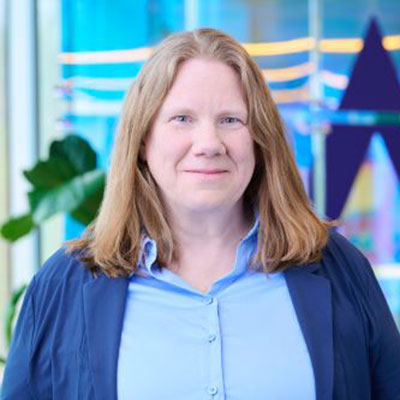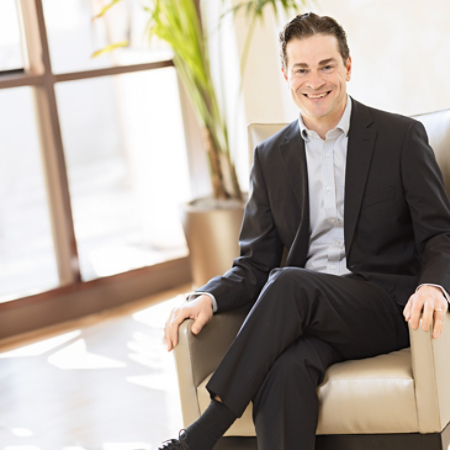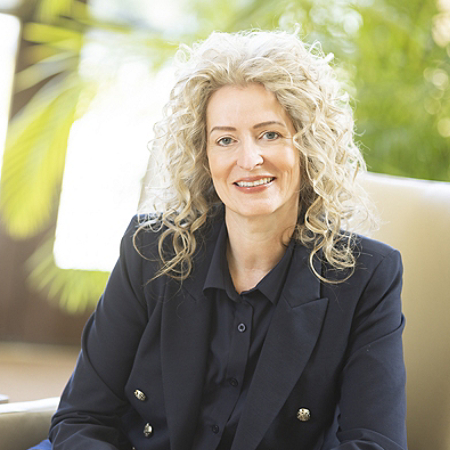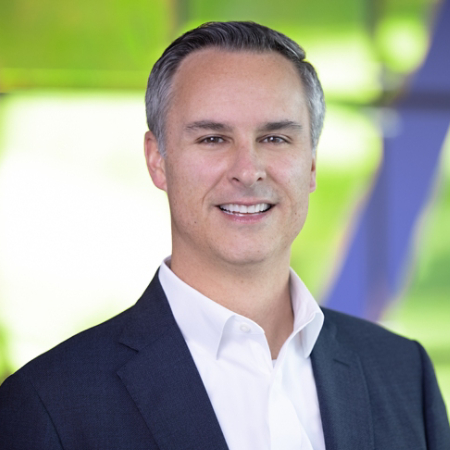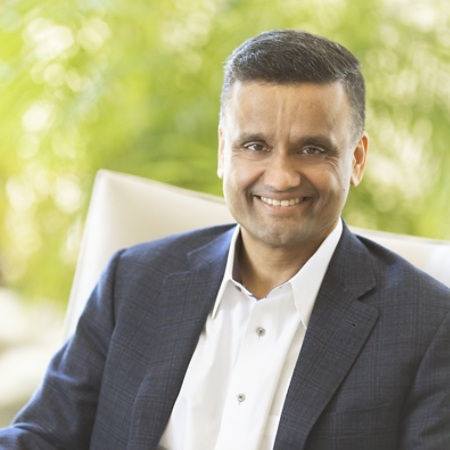[00:00:00] Rasha Hasaneen: When it comes to discussions around air quality and mass transit, the conversation usually splits into two categories. The effect of public transport beyond the mode of transportation.
[00:00:11] Jared Schnader: When we think about the zero-emission technology, what really matters beyond just the emissions, is that we're equitably distributing all of this technology. Not just in the urban areas, but also into the rural areas.
[00:00:24] Rasha: And the measures mass transit takes on improving air quality inside the vehicle.
[00:00:30] Dwayne Cowan: In most buses, space and weight are at a premium. And that bus HVAC system, it needs to be very compact and light. The bus fleets are typically comprised of different ages and types. And so there must be some focus on the solution that can be retrofittable for that bus type solution.
[00:00:51] Rasha: That's Jared Schnader and Dwayne Cowan. As director of the National Bus Initiative at CALSTART, Jared is transforming fleets by helping transit agencies across the country to deploy zero emission vehicles. And as vice president of commercial at Thermo King, Dwayne's work focuses on rolling out innovative HVAC solutions on public transport to keep these mobile spaces safe for the thousands of riders that use them every day.
I'm Rasha Hasaneen and you're listening to Healthy Spaces with Trane Technologies, a series of conversations that explores the world of indoor environmental quality from the inside out.
We talk a lot about indoor environmental quality on this show - but we can't have an episode about mass transit and not talk about how vehicles impact the air outside. According to the EPA, the transportation sector, as a whole, accounted for 29% of greenhouse gas emissions in the US in 2019. This has impacts not only on our environment, but our health as well. The main pollutants emitted from the transportation sector are carbon dioxide, particulate matter, oxides of nitrogen and volatile organic compounds. And in the presence of sunlight, these last two react to create ozone - the main ingredient of what we commonly call smog.
Breathing ozone can cause severe health effects, like shortness of breath and coughing, increased frequency of asthma attacks, and even chronic obstructive pulmonary disease. Thankfully though, cleaner vehicle technology is advancing in leaps and bounds, and people like Jared are working hard to bring this tech to our public transport networks, making the air in our cities and streets healthier once again.
[00:02:47] Jared: My job is director of bus programs for CALSTART. So I work with all of our transit school bus and commercial bus properties that we work with, and planning, procuring and deploying zero emission buses all across the country. Looking at the way that the evolution of transit buses and the technology has just taken off over the last decade has been so exciting to not only track, but to be a part of. Zero emission buses have been around for about 14 years in a commercialized setting; however, what we've seen in the last three to five years, is a complete explosion from doing demonstrations and pilot projects to starting to move to scale and being able to help transit agencies move in that direction and to plan out and help them with the infrastructure and the operations. It's been so much fun. It's so difficult. It's so hard to work with, but it's so rewarding at the same time.
[00:03:42] Rasha: I bet. And just like you said, just in the last few years, we've heard so much about net zero buses and electrification of transport. Maybe you can tell us a little bit how the introduction of sort of zero emissions has changed the conversations you have kind of every day.
[00:04:10] Jared: When we look at the way that zero emission buses came around to a commercialized setting - when they first were introduced, these buses cost about 1.2 to 1.3 million dollars a boss, and they went about 38 miles before they had to be recharged. That's not very far. And it's really expensive. The federal government helped fund these battery electric buses through this infancy stage, and so what we're seeing now in the market is these buses are costing around $750,000 to $800,000 dollars, but they are going anywhere from 200 to 250 miles on a single charge. So we've seen this evolution in technology that was really seeded by the federal government. And I give a lot of credit to the federal government for investing into this technology that's bringing about this entire evolution of electrification.
[00:05:08] Rasha: And, you know, what's really interesting about mass transit in particular is two things. One, it operates in these environments that are so dense that having that electrification is so much more critical than say a cross-country vehicle. The other thing is how important clean mass transit has to be for sustainable cities. But you can't get to a net zero city if everyone's driving their own car all the time, so that the ability to have clean net zero mass transit becomes really, really critical to achieving those goals.
[00:05:43] Jared: And when you look at net zero cities, it's much more efficient to get on a bus or on rail. However, why not make that a zero emission vehicle that you're riding on to make it even more efficient. And then you also have to keep in mind the emissions that are coming off of, let's say, a diesel bus for the people within the vehicle itself. That is a huge component to this, that the transit manufacturers are not required to test. There are durability tests these buses have to go through from the federal government, however, that does not do any kind of testing within the vehicle itself for any kind of emissions criteria.
[00:06:24] Rasha: You know, a lot of people talk about efficiency and they talk about net zero cities. We don't hear as much around the indoor air quality in these buses. How has that shifted recently? And has there been an increase in focus there?
[00:06:40] Jared: I would say COVID definitely pulled a lot of people into this space to figure out how to look at air quality within vehicles. These are not hermetically sealed. For anyone that's been on a bus, they know they rattle, they shake the door's flap and everything. It's part of it. These buses are built to last. They are built for 12 years at a minimum, and you still have parts of wear out just like any vehicle would. And so you do have all of these concerns about where's air coming in and how it’s traveling throughout the vehicle. COVID has really shone a light on the fact that we just did not really know. We had never really planned on this, it was never something they really had to talk about. We are seeing a lot more interest in airflow within buses now and a lot more modelling being done on the academic level.
[00:07:36] Rasha: Let's assume that not everybody really understands the impact or the pandemic on transit systems. Maybe you can kind of bring our listeners up to speed on sort of what transit systems have endured through the pandemic and what some of the changes they're making as it relates to the pandemic and COVID-19 and their practices.
[00:07:50] Jared: The transit industry should be applauded if they haven't been enough already, because the way that they operated through the pandemic was so impressive. Transit moves people all across cities and rural communities, urban communities, suburban communities, they get people to life-saving treatments, they get people to supermarkets and grocery stores, get them to work.
During the pandemic when everything was shut down, transit still had to run to transport essential workers to and from their jobs to support all of the pandemic work that was being done, whether that was at grocery stores or at hospitals. And we saw transit really step up and also evolve. It was great to see that there were meal deliveries that were being done by transit agencies that just pivoted to figure out how they could serve their communities when they weren't able to transport people because people were no longer riding on transit because they were all working from home.
But now that we see people getting back onto transit, just looking at what they've learned, including putting in barriers for drivers, physical distancing, wearing masks, disinfecting, all of these things that we learned through those really difficult months and months that we all experienced through the pandemic.
[00:09:18] Rasha: Just as building owners learned the importance of improved hygiene measures to keep schools and offices safe with the outbreak of COVID - so have transit authorities. And it's reassuring to hear that these efforts will continue even beyond the pandemic. But in talking about the importance of public transport for our economy, Jared touched on something else that effective mass transit also plays a crucial role in - equity.
[00:09:45] Jared: Mass transit provides transportation across communities for jobs to get people to healthcare and childcare, whatever it may be. But that is a lifeline. Not everyone can afford a car, nor should we require people to be in cars. It's not fair to tell somebody that, look, if you want to have a job, you have to have a car because we don't want to have mass transit. So, we have to be able to serve everyone and to be able to give access to them. It's also not fair to tell somebody that you have to walk a mile and a half, two miles, three miles just to get to a transit station so that you can get to your job across town and spend three hours just commuting on bus.
Making sure that there are equitable solutions to move people efficiently through cities and effectively is incredibly important. We're seeing micro transit coming on the scene now, which are smaller vehicles that can be utilized across cities to bring people in their first/last mile solution, and being able to offer that at a fraction of the cost of putting a full-size bus out there.
The other thing we have to think about is that an entire state, not just a city or not just one transit agency should have this technology. What really matters beyond just the emissions is that we're equitably distributing all of this technology. It shouldn't be that just the cities get access to this technology because there are small urban areas, there are places in the countryside that still have bad air quality. But beyond just the bad air quality, there's also the workforce development piece. We have to make sure that we're focusing on moving this forward on getting people trained and you have to give them access to that technology. If you're not bringing zero emission to the rural areas, into the small urban, you're not going to have the technical colleges and community colleges that we need to train up the next workforce or to retrain the workforce that we have right now. You're just not giving them access to it.
[00:11:55] Rasha: And what I'm also hearing you say is technology on its own is not going to solve this. It's about applying the technology and what we as people do with the technology that really matters. We've heard a lot about infrastructure funding.
I know you've done a lot of research on the fact that there is funding available to improve infrastructure, but a lot of transit authorities don't have the time or know how to access the fund. Maybe you can talk a little bit about your white paper and the research you've done and share some insights with our listeners.
[00:12:27] Jared: We wrote a white paper on what's called state-wide procurements. We looked at one of the issues in adopting zero emission vehicles, and one of the problems was having to go out to bid for these vehicles every single time. So, if you're one transit agency, you may be able to go in with other agencies and do what's called a joint procurement. And that's great. However, it doesn't allow for flexibility and just greater expansion and access to the technologies.
We worked with the Michigan Department of Transportation to develop their state-wide procurement for battery electric cutaway buses. The reason we did that was under the Fast Act in 2015, it allowed for this state-wide procurement to be done through a department of general services or a central contracting agency within a state that can then issue an RFP for buses, award multiple vendors on that contract, and then any state DOT or transit agency can purchase off of that awarded contract without any maximums or minimums. It hadn't been done on a federalized level before. So, we took what was essentially a procurement for 12 battery electric cutaway buses, and now based off of our estimates, it looks like that contract can be used for about 300 buses.
Just taking what was already there and what the existing regulations are and using them to tear down the barriers and really help with adoption. And that state-wide procurement will allow state DOTs and transit agencies from everywhere to buy it or to buy off of that instead of just one small agency or one large agency in one state.
[00:14:18] Rasha: And you can find the link to that research in the show notes on your podcast app. Now we're going to turn our focus away from the technology powering our public transport vehicles to the technology that's keeping the air inside them safe for the thousands of commuters that use them every day. And for this, we need the expertise of my next guest, Dwayne Cowan.
[00:14:38] Dwayne: Well, I'm the vice president of our commercial organization for Thermo King. Thermo King is a division of Trane Technologies, and our products are used to transport solutions across the world.
[00:14:51] Rasha: So, Dwayne, in your role you speak with a lot of customers every day. In your experience what was going through the mind of bus operators and transit authorities during the height of the COVID-19 pandemic?
[00:15:02] Dwayne: Yeah. So, the economy stopped, but we also knew that bus and transit was critical to keep the economy going. And the bus drivers were concerned too, because at that time we really didn't know how you transmitted COVID, so there was a lot of concern on the role they had to play during this pandemic. And we understood that to be the case in terms of our customers. That’s why we really thought about what we could do to make their environment a safer environment for them. That was critical to us that they felt comfortable, and they felt that they could do the jobs they need to do to keep our economy going for those essential employees.
[00:15:44] Rasha: So, it sounds like safety was the biggest concern during the height of the pandemic. What about now? Fast-forward to today- a lot of cities around the world have - or are starting to - ease up on restrictions. Have you noticed any changes in the behavior of our customers? What are some of those concerns that have remained as a result of the pandemic?
[00:16:00] Dwayne: There've been some changes. The urgency has changed a little, but in general, transits are definitely focused on solutions to provide confidence in their ridership. Ridership has come back significantly, but it's not all the way back.
We had an actual team of individuals at the American Public Transportation Association, and we heard a lot of people were interested in purification type technologies. So, we still know that there's a lot of interest in this. They're taking the time to understand the technologies better to ensure that those technologic provide value and create the solution that our customers are looking for. But in the initial stages, I think the urgency was so high that in some cases, if you said you had something, they just wanted to try it and say, okay, I got to do something to get that confidence back to my ridership.
Now they're being a little bit more thoughtful around the solutions and making sure that the solution they put into their transit authority really works. The interest is there, it's just ensuring that whatever solution they have really meets the needs of their riders.
[00:17:07] Rasha: You mentioned better technologies are out there and I'd like to dive a little deeper into that.
Throughout this season we've talked about some of the air purification solutions available for homes, schools, office spaces and more - you know, everything from HEPA filters to UV lights. Can you talk a little about what some of the challenges are in implementing these kinds of solutions in mobile spaces like buses?
[00:17:30] Dwayne: Yes, there’s some differences there and there some reasons why you don't see all those different technologies. First, I would say space constraints in the bus cabin, and then also space constraints in the bus HVAC system. In most buses, space and weight are at a premium. And that bus HVAC system, you need to be very compact and light. The bus fleets typically comprise of different ages and types. And so there must be some solution that can be retrofittable for that bus type solution.
Also, airflow, which is critical to meet the HVAC load needs. We've talked about accommodating space, but the bus HVAC system typically operates at very high airflows, as often as high as 50 air exchanges per hour. And if you compare it to an indoor type of air quality situation, it's probably four to five, so tenfold. It's a lot more exchanges in that application that really causes some constraints on your technology. Some people don't think that's a lot, but it's significant in terms of ensuring that you're getting to contaminants out the air. So that's very important for us to meet that requirement. And it's a tough requirement. And that's where we see a lot of solutions fall down. The operation of the buses often involves frequent door openings and closing, so that causes some constraints as well. With all the airflow ramifications, that makes it a little bit more difficult than what you would see in an indoor air quality type of environment.
[00:19:01] Rasha: In previous episodes, we've often talked about the important role of ventilation in improving indoor air quality. Just like a classroom or an office, buses also use an HVAC system to circulate and filter the air inside. However, as Dwayne noted before, buses also have higher air exchange rates compared to a typical indoor spaces. This poses some unique challenges for public transit vehicles which buildings just don't have to contend with. But unique challenges inspire innovative remedies - and one of those is part of our new air purification solution in our Thermo King business.
This solution leverages an innovative technology called graphene-enhanced photocatalytic oxidation, or GPCO for short. Sounds like a mouthful, doesn’t it? I’ll try to break it down.
Photocatalytic oxidation is the process of oxidizing contaminants and organic compounds in the air and breaking them down into harmless by-products. To feed this reaction, you need photons – which are a form of light energy – and a catalyst. This reaction creates hydroxyl radicals - brave short-lived heroes who then react with organic compounds and reduce them to carbon dioxide and water.
The process of photocatalytic oxidation has been known for decades. So, what makes GPCO innovative? It’s all in the G, for Graphene.
Graphene is a different form of carbon which is widely used to enhance other materials. It is incredibly light and strong – about 200 times stronger than steel – and has demonstrated other great properties like hydrophilia and electrical conductivity. It even earned its inventors a Nobel Prize in 2010!
By enhancing our catalyst with graphene’s amazing properties we can significantly improve the air cleaning effectiveness of the device. The now enhanced catalyst can produce more of our short-lived radicals which hang around for longer, which means they can inactivate viruses and organic compounds in the air faster.
[00:21:09] Dwayne: So, a lot of technology behind it. But one thing I do know about it is that I feel safter with this on the bus I’m traveling on. So, we’re really excited about this technology to provide that solution for these riders, that they really value their safety when they’re in these mass transit type environments.
[00:21:30] Rasha: And, Dwayne, I heard that Thermo King is currently working on a project specific to school buses. Is that something you could tell us about?
[00:21:38] Dwayne: So we were working with mid-sized universities, one in the state of North Carolina that uses this technology. And we're excited to be part of that solution for them. And that was pretty impressive because we are talking about college age students who are going back and forth to classes. And in a lot of cases, there's a lot of congestion on that bus. I have a kid that's in college also, so I have the gamut, fourth to college, and I know my kid rides a lot of transit buses while he's at college. And as important as it is for my four-year-old to feel safe when she goes back and forth to school, it's just as important for my older kid to feel like he can ride transit and ride the school bus at his local college. So having solutions there are very important to us. And, that's something that we'll continue to build out our portfolio to create more opportunities for additional kids to have access to this type of technology.
[00:22:38] Rasha: Plus, that feeling of safety that riders have will go a long way in making mass transit a sustainable transport solution for passengers moving forward too. And speaking of sustainability - in your conversations with transit authorities, how are they connecting their air quality and rider safety goals with their sustainability and efficiency goals?
[00:22:58] Dwayne: Sustainability is front and center and it used to be sustainability was really around reducing emissions. And it's still, the big trends are electrification; healthy, safe environments; digital assets. Those things are huge trends, but they're blending together because people understand that we want to be safe and have healthy environments when we're walking down the street or we're breathing the air.
But now we know that when we're in these enclosed environments where door openings are happening, windows are coming down. We want to have that same level of comfort and feeling like we're safe in those environments as well. So, it's good for us because we're investing heavily in these areas and we think that that's going to be the future for us. Over the next, you know, three to five years, you'll see a lot of TK investments in creating these more sustainable solutions, but they're going to be around making environments better. And if you think about going into some of the urban areas where they would be using these type of a means of transportation, we want to level the playing field, make it easier for them to have access to clean environments and by investing in technologies and giving them the opportunity to have the same attributes that maybe some of the more affluent areas have. I think we're really moving the needle in the right way for the transit authorities.
[00:24:28] Rasha: A lot is being done to make our mass transit systems safe, practical and sustainable. And technologies like zero emission vehicles and graphene enhanced photocatalytic oxidation are playing a key role in making this a reality. So, as we continue to advance towards the future of mass transit, I asked Dwayne and Jared what advice they have for commuters venturing back onto public transport or considering using it for the first time.
[00:24:55] Dwayne: I'll first start by saying, abide by a CDC guidelines. Mask, sanitizing of your hands, do your part. I have a son in college and he use public transportation, as I mentioned earlier, and I always tell him, you know, the transits are doing what they can to ensure that the environment on those buses are better. They're cleaning them. In some cases, they have different technologies that may help with the solution. But it's ultimately up to you.
I still ride transit, so I think it's a safe environment. They've done a lot to invest in technology to ensure that, uh, the ridership is there and it's safe while you're on the transits. But make sure you're doing what you can as well to further that safety for yourself and or the other riders on that bus.
Now it's interesting because people always want to have this silver bullet on what should I do? And it's tough. But what I can say is that if you're using public transportation, you can always inquire about what steps they're taking to keep that bus safe. If you feel comfortable, you know, jump on. But if you feel like there's something that you're not hearing, that you think you should hear, then bring that up as well. Because I think all of them want to create an environment for you to be safe. And so they're working and trying to find solutions that will meet the needs for their ridership. And so, just ask that question and get the information for yourself, but don't forget do the basic steps you can do yourself to remain safe while you're in those environments as well.
[00:26:36] Jared: Once you realize that you can uncouple yourself from the car, that you can just get into mass transit, it makes your life so much easier. It takes a burden off of your plate. I encourage everyone, if you have access to mass transit, start using it. Once you really make an effort to get onto the vehicle and actually give it a chance, it's something that you will not go back from.
The one thing I will say is if you are having problems, if there are issues there, call up your transit agency. That is literally what they are there for is to serve all of their riders, to make sure that it is effective and efficient for them. I sit on transit boards down here in Florida where I’m based. We love to hear from the public, to hear what kind of issues they're having, because that way we can help enact change, and if you are not involved in it, if you are not engaged in it, then if it doesn't serve you, then you just kind of quit.
[00:27:38] Rasha: Fantastic advice from Dwayne and Jared. Being vigilant and asking which safety measures are being used is so important. But if you're not happy with the solutions in place, then engaging with transport authorities is a must if you want standards to improve.
You've been listening to Healthy Spaces with Trane Technologies. I'm Rasha Hasaneen.
For more information on our conversation with Jared Schnader and Dwayne Cowan, see the show notes on your podcast app. Join us next time for the season 2 finale with special guest Manish Sharma, Global CTO at Honeywell Building Technologies, to talk about how technology and artificial intelligence can help create healthy and efficient indoor spaces.
Don't forget to follow us to hear new episodes. Thanks for joining us. We'll see you next time.
